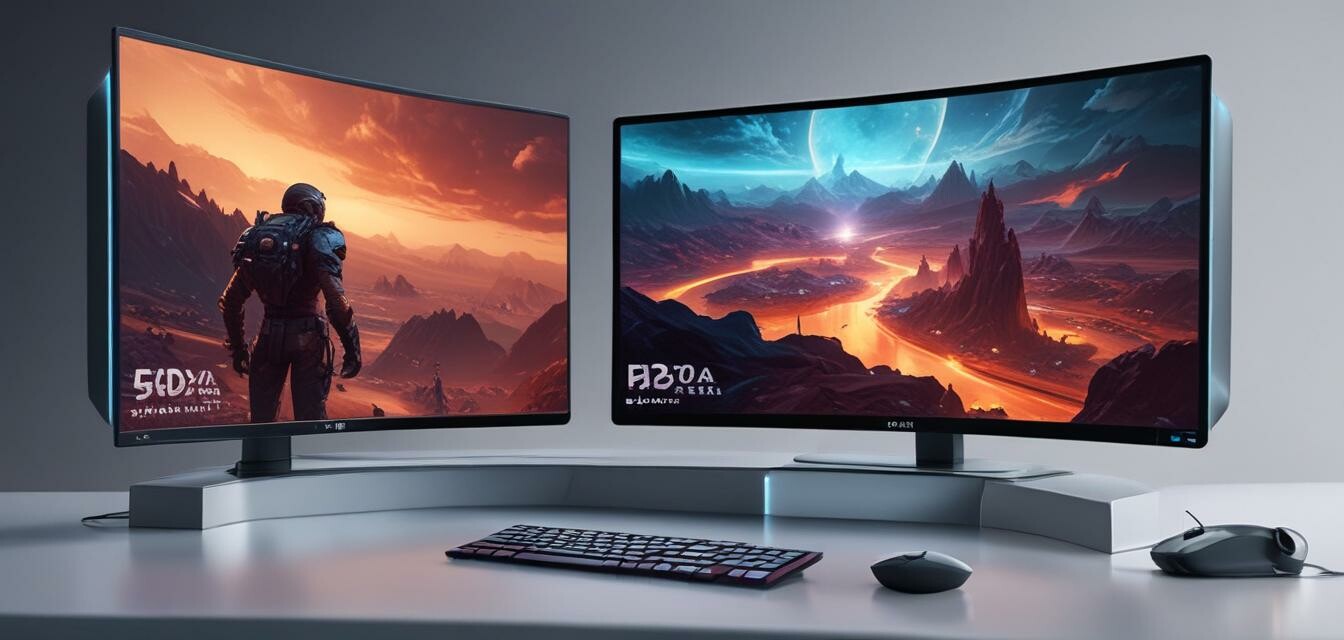
The Ultimate Showdown: OLED vs. QLED Gaming Monitors
Choosing the perfect gaming monitor can be a daunting task with the abundance of options available. Among the top contenders in today's market are OLED and QLED technologies. This article will provide a detailed comparison of **OLED vs. QLED gaming monitors**, highlighting their advantages, disadvantages, and suitability for various gaming applications.
Key Takeaways
- OLED monitors offer superior contrast and deep blacks due to individual pixel illumination.
- QLED monitors provide brighter displays and are often more affordable.
- For fast-paced games, both technologies have models with competitive refresh rates and response times.
- The choice between OLED and QLED depends on personal preference, budget, and gaming needs.
Understanding the technologies
What is OLED?
Organic Light-Emitting Diode (OLED) technology utilizes organic compounds that emit light when electricity is applied. Each pixel in an OLED display is self-lit, enabling excellent color accuracy and contrast ratios.
What is QLED?
Quantum Dot Light-Emitting Diode (QLED), on the other hand, is an LCD technology enhanced by Quantum Dots. These dots improve brightness and color, providing vivid images and a larger color palette.
Comparing key features
| Feature | OLED | QLED |
|---|---|---|
| Contrast Ratio | Infinite | High, but not infinite |
| Brightness | Moderate | High |
| Color Accuracy | Exceptional | Very Good |
| Response Time | 1 ms | 4 ms or higher |
| Price Range | Higher | Varies, generally lower |
Pros and cons of OLED vs. QLED gaming monitors
Pros of OLED
- Superior contrast and deep blacks.
- Wide viewing angles without color distortion.
- Faster response time, enhancing fast-paced gaming performance.
Cons of OLED
- Higher price point compared to QLED.
- Potential for burn-in with static images.
Pros of QLED
- Greater brightness, making it ideal for bright rooms.
- Usually more affordable than OLED monitors.
- Less risk of burn-in issues.
Cons of QLED
- Inferior contrast compared to OLED due to backlighting.
- Limited viewing angles might cause color distortion.
Best gaming applications for each technology
When to choose OLED?
If you value deep blacks and unmatched contrast, OLED monitors are ideal for atmospheric games and single-player experiences that focus on visuals.
When to choose QLED?
QLED monitors are better suited for bright environments and multi-player games where brightness and affordability play a significant role.
Final thoughts
Ultimately, the choice between OLED vs. QLED gaming monitors boils down to personal preferences and specific gaming requirements. Both technologies deliver stunning visuals and performance, so understanding the differences can help you make an informed decision. For more insights, check out our buying guides and latest trends in gaming monitors.
Explore more OLED gaming monitors!
Interested in specific models? Visit our 4K OLED gaming monitors and budget-friendly options for a comprehensive overview.
With this information, you'll be able to make an excellent choice when selecting the right gaming monitor for your setup. Happy gaming!